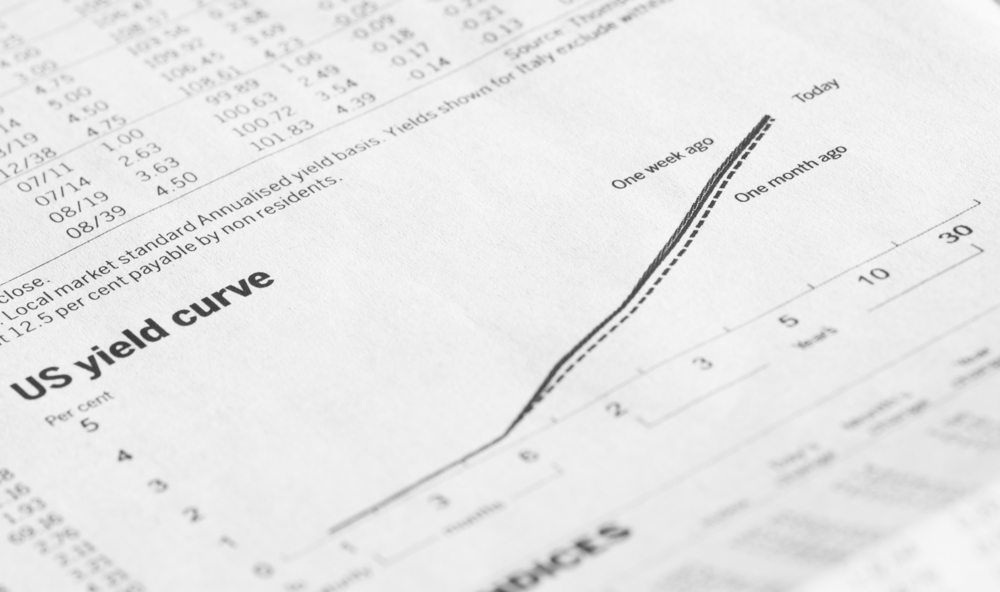Over the past several decades, one of the most reliable economic indicators has been the shape of the US Treasury yield curve. The yield curve is simply a graph of current yields on treasury bonds from the three-month T-Bill to the 30-year treasury bond.
The normal shape of the yield curve from left to right is roughly a 45-degree line moving up toward the right. That is normal because short maturity bonds (on the left hand side of the curve) have lower yields than longer term bonds (on the right hand side of the curve) when the economy is healthy and growing.
Steeper curves occur during times of strong economic growth, while shallow or flat curves occur during periods of slowing economic growth. When rates on short-term bonds are higher than rates on longer maturities like the 10-year bond or even the 30-year bond, the bond market may be forecasting a coming recession.
According to research by the Chicago Federal Reserve Bank, all recessions since the 1970’s have been preceded by an inverted yield curve. In their study, they examine the yields of the two-year treasury note versus yields on the 10-year treasury bond (known as the 2s/10s).
After a relatively strong non-Farm payroll report on Friday April 1 this year, the 2s/10s inverted. Data from the US Treasury on that date shows a 2.44% yield on the two-year note and a 2.38% yield on the ten-year bond. The 2s/10s remained inverted for only two days before the ten-year yield started to climb creating a slightly positive curve slope. Does that mean that a recession is imminent? Not if you listen to the economic pundits here, here and here. So, who’s opinion is right? Beware of comments like ‘this time is different’, the bond market has a pretty good track record of forecasting recessions.
Disclaimer
This material is provided by Schmitt Wealth Advisers for informational purposes only. Schmitt Wealth Advisers does not provide tax or legal advice, and nothing herein should be construed as such. It is not intended to serve as a substitute for personalized investment advice or as a recommendation or solicitation of any particular security, strategy, or investment product. Opinions expressed by Schmitt Wealth Advisers are based on economic or market conditions at the time this material was written. Economies and markets fluctuate. Actual economic or market events may turn out differently than anticipated. Facts presented have been obtained from publicly available sources (unless otherwise noted) and are believed to be reliable. Schmitt Wealth Advisers, however, cannot guarantee the accuracy or completeness of such information. Past performance may not be indicative of future results.

